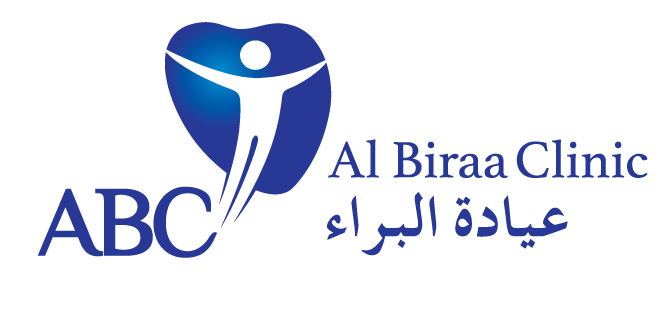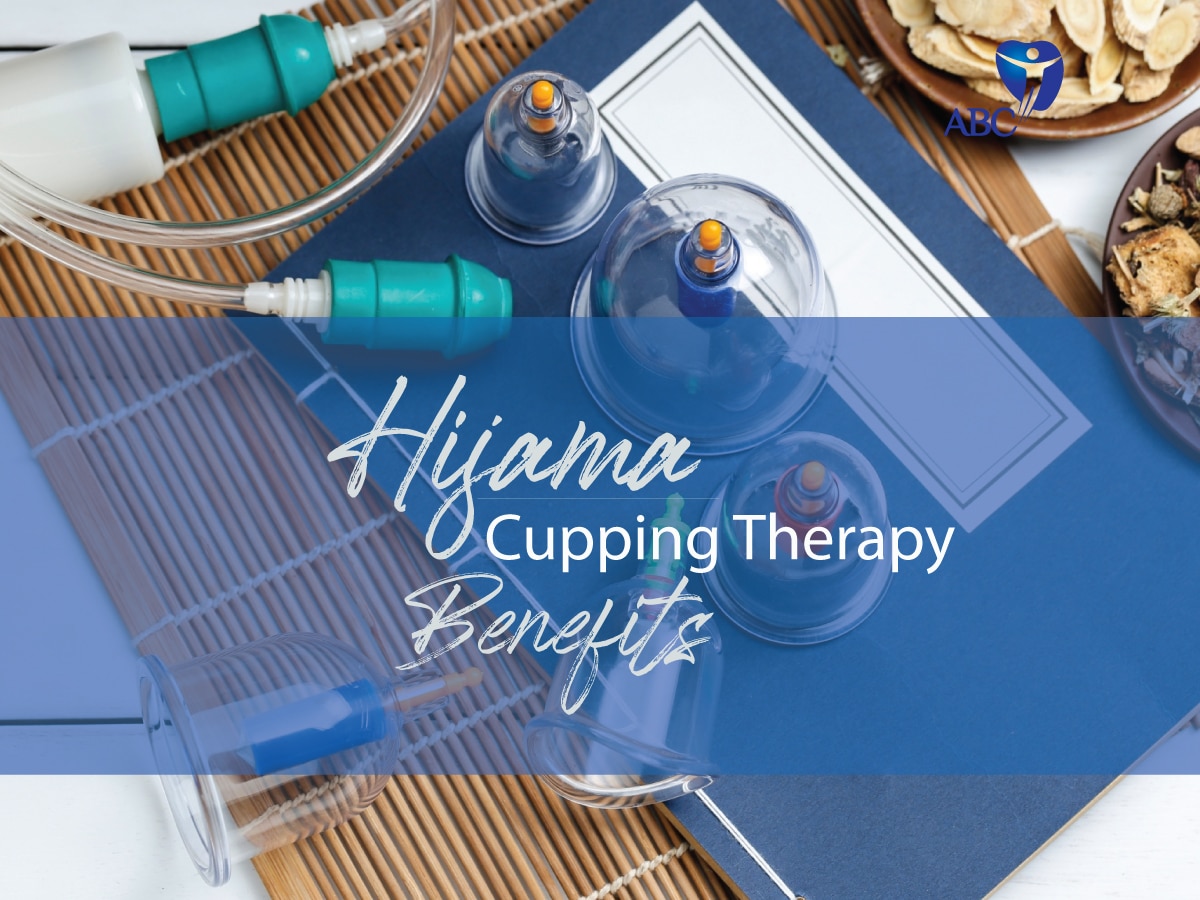
Hijama, commonly referred to as “cupping therapy,” is a conventional therapeutic method that entails creating a vacuum inside a cup that is applied to the skin. The skin and underlying tissues are drawn into the cup by the vacuum’s suction, which is said to increase blood flow, lessen inflammation, and speed up the healing process. Glass or plastic cups that have been heated or placed on the skin to generate a vacuum are commonly used in cupping therapy. After being in place for a short while, the cups are removed. A therapist may occasionally move a set of cups around the skin to provide a “moving cupping” effect.
Hijama cupping therapy has been used for centuries in traditional medicine systems such as traditional Chinese medicine and Ayurveda. It is also used in traditional Islamic medicine and is commonly referred to as a hijama.
Here are some of the benefits of hijama cupping therapy:
- Promotes blood circulation: Hijama Cupping Therapy helps to increase blood flow to the affected area, which can help speed up the healing process and reduce inflammation.
- Relieves pain: Hijama Cupping Therapy has been shown to be effective in reducing pain and discomfort in various parts of the body, including the back, neck, arthritis, lower back pain, headaches, migraines, tooth pain, muscular pain, sciatica, and other types of pain.
- Boosts the immune system: Hijama cupping therapy can stimulate the immune system, helping the body fight off infections and diseases.
- Reduces stress and anxiety: Hijama Cupping Therapy has a calming effect on the body, helping to reduce stress and anxiety levels.
- Detoxifies the body: Hijama Cupping Therapy can help to remove toxins and impurities from the body, promoting overall health and well-being.
- Improves skin health: Hijama Cupping Therapy can help to improve the appearance of the skin, reducing the appearance of acne, cellulite, and other skin conditions.
- Enhances athletic performance: Hijama Cupping Therapy has been shown to improve athletic performance by reducing muscle soreness and improving range of motion.
- Cure respiratory illnesses: Hijama Cupping Therapy can cure respiratory illnesses such as persistent cough, asthma, bronchitis, and pleurisy.
- Cure chronic fatigue syndrome: we are mentally overburdened by digital distractions such as cellphones, computers, and so on. All of these can contribute to chronic fatigue syndrome. Hijama, or cupping, is an excellent therapy for this problem.
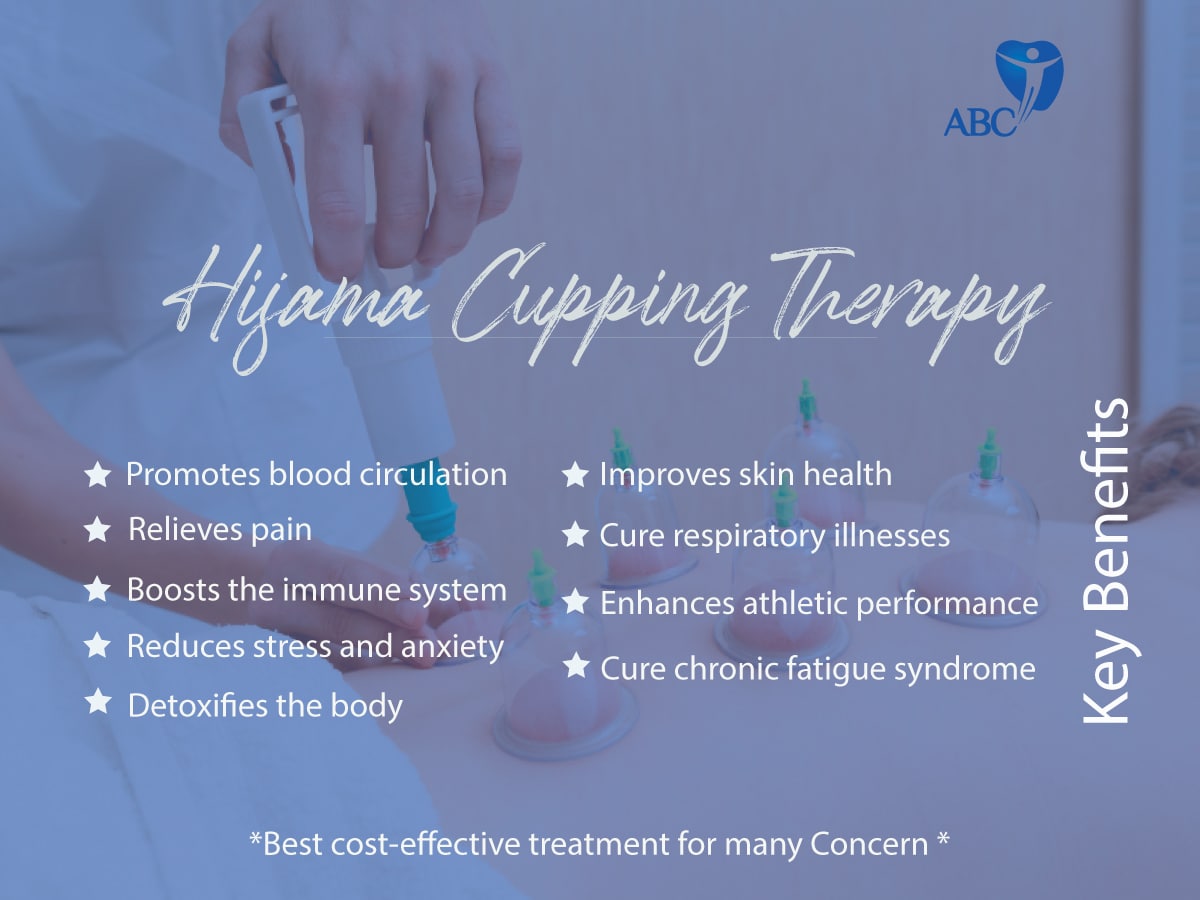
Benefits of hijama cupping for ladies?
The benefits of hijama can vary from person to person, some of the potential benefits for women may include:
- Relief from menstrual cramps: Cupping therapy has been shown to reduce the severity of menstrual cramps in some women. The suction created by the cups can help to increase blood flow to the pelvic region, which can relieve pain and discomfort.
- Treatment for infertility: Cupping therapy may help to increase blood flow to the reproductive organs, which can improve fertility in some women. It may also help to reduce stress and anxiety, which can be a contributing factors to infertility.
- Relief from back pain: Many women experience back pain, particularly during pregnancy. Cupping therapy can help to relieve muscle tension and improve circulation, which can alleviate back pain.
- Relief from headaches: Cupping therapy can help to increase blood flow to the head and neck, which can alleviate tension headaches and migraines.
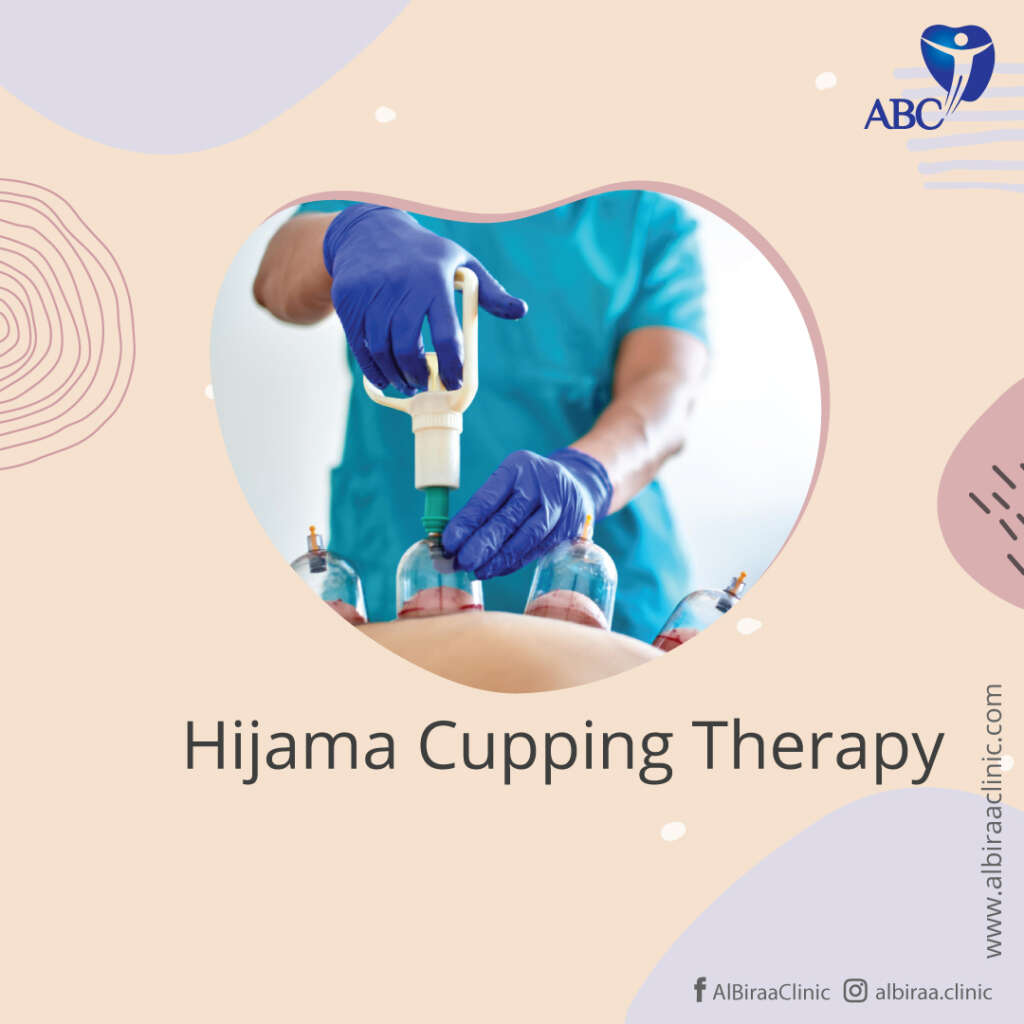
Hijama benefits for weight loss?
Cupping therapy can help with weight loss indirectly by addressing some of the underlying factors that contribute to weight gain. Here are a few ways that hijamas may be beneficial for weight loss:
- Improved circulation: Cupping therapy can improve blood flow and circulation, which can help to improve the function of organs like the liver and kidneys. This, in turn, may help to boost metabolism and support healthy weight loss.
- Reduced inflammation: Cupping therapy can help reduce inflammation in the body, which is a common factor in many chronic health conditions, including obesity. By reducing inflammation, hijamas may help support weight loss efforts.
- Stress relief: Stress and anxiety can contribute to weight gain by increasing cortisol levels in the body, which can lead to overeating and weight gain. Cupping therapy has been shown to help reduce stress and anxiety, which may indirectly support weight loss efforts.
- Improved digestion: Poor digestion can contribute to weight gain by preventing the body from properly absorbing and utilizing nutrients. Cupping therapy may help to improve digestion by increasing blood flow to the digestive system and promoting the release of digestive enzymes.
Cupping therapy benefits for hair?
Cupping therapy or hijama has been used for various health benefits, but there is limited scientific evidence to support its effectiveness for hair health. However, some people believe that cupping therapy may have the following benefits for hair:
- Improved blood circulation: Cupping therapy can increase blood circulation in the scalp, which may help to promote hair growth and improve the health of hair follicles.
- Reduced inflammation: Cupping therapy can help to reduce inflammation in the scalp, which is a common factor in hair loss and hair thinning. By reducing inflammation, hijama may help to support hair health.
- Reduced stress: Stress and anxiety can contribute to hair loss by disrupting the normal hair growth cycle. Cupping therapy has been shown to help reduce stress and anxiety, which may indirectly support hair health.
- Improved nutrient delivery: Cupping therapy can help to improve the delivery of nutrients to the scalp and hair follicles by increasing blood flow. This may help to support hair growth and improve the overall health of the hair.
Is hijama painful?
Hijama, also known as cupping therapy, is generally considered to be a safe and non-invasive treatment. However, it can be mildly uncomfortable or even painful for some individuals. Here are a few things to keep in mind:
- Sensations during hijama: During the hijama procedure, you may feel a sensation of pressure or tightness as the cups are applied to your skin. Once the cups are in place, you may feel a pulling or suctioning sensation as the air is removed from the cups. This sensation can vary from person to person and may be uncomfortable or even painful for some individuals.
- Pain tolerance: Pain tolerance varies from person to person, so what may be painful for one person may not be painful for another. Additionally, the amount of discomfort you feel during hijama may depend on the area of the body being treated, as some areas are more sensitive than others.
- Technique: The technique used during hijama can also affect how comfortable or uncomfortable the procedure is. Experienced practitioners who use proper technique are less likely to cause pain or discomfort during the procedure.
- After-effects: After the hijama procedure, you may experience some mild discomfort or soreness at the site of the cups. This is normal and usually goes away within a few hours to a few days.
Overall, while hijama can be uncomfortable or even painful for some individuals, it is generally considered to be a safe and non-invasive treatment. As with any medical treatment, it is important to talk to a healthcare provider before trying hijama cupping therapy, especially if you have any health conditions or are taking any medications.
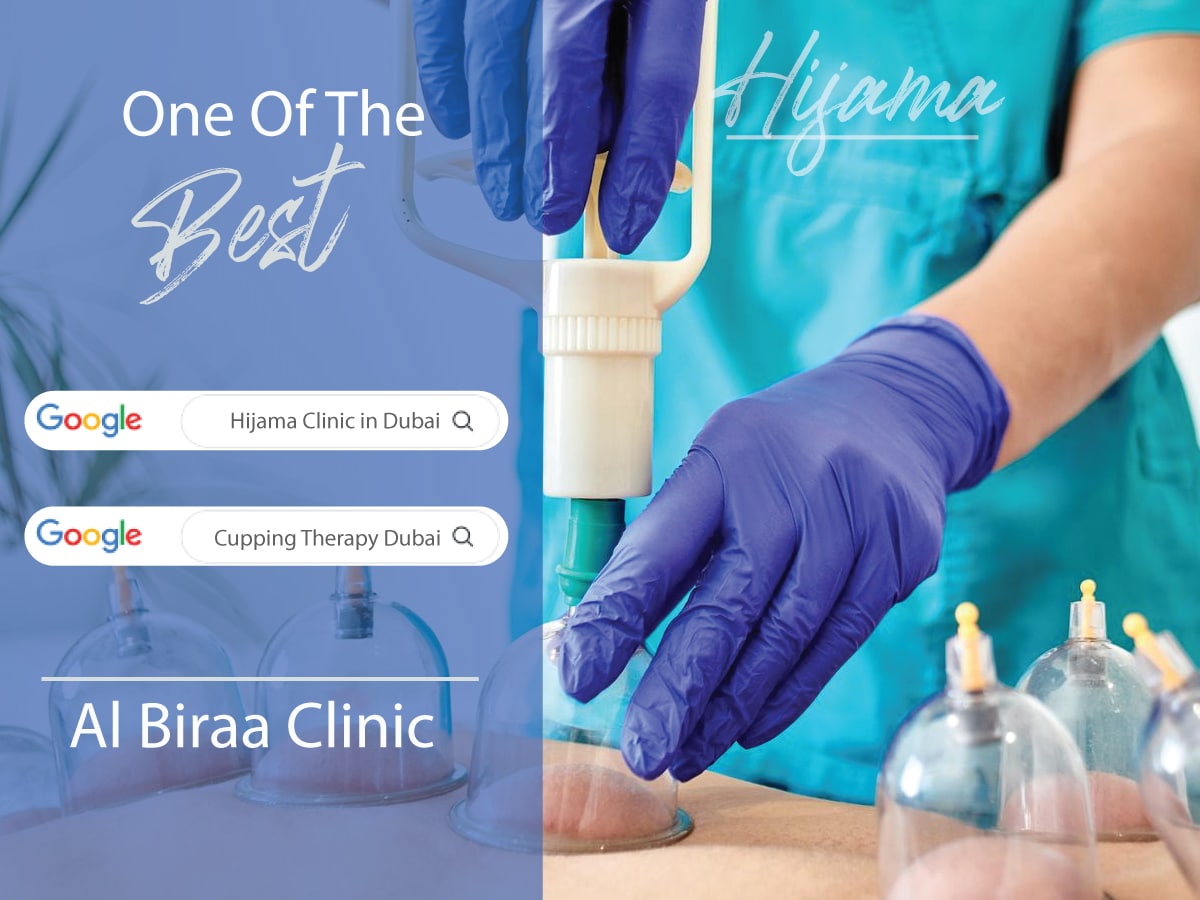
At our clinic, we offer safe and effective Hijama Cupping Therapy treatments that are tailored to meet the unique needs and concerns of each of our clients. Our experienced practitioners use sterile and disposable cups to ensure a hygienic and comfortable experience. Contact us today to schedule your Hijama Cupping Therapy session and experience the many benefits for yourself.
